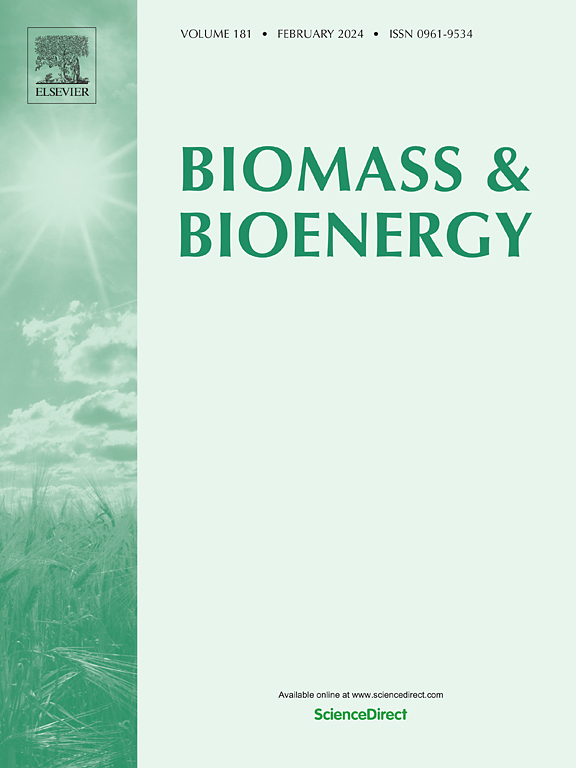通过暗发酵与原电池相结合的集成生物电化学系统提高制氢和废水处理
IF 5.8
2区 生物学
Q1 AGRICULTURAL ENGINEERING
引用次数: 0
摘要
传统的生物电化学和微生物电解系统往往具有低功率密度(PD)依赖外部能量输入,这限制了它们在能量回收、废水处理和限制氢气(H2)产量方面的可扩展性。为了解决这些问题,该研究引入了一种新的集成生物电化学系统(IBES),该系统将原电池与暗发酵结合起来,借助自发氧化还原反应提供的内部强度。作为回应,结果表明该系统现在能够在不需要外部能量的情况下产生H2并去除污染物。结果表明,在化学需氧量(COD)浓度为10,000 mg/L的条件下,IBES的H2产率为75.5 ~ 78.8 N LH2/kg TOC,是单独发酵条件下的3倍,NH4+去除率为94%,最大COD降低率为78%。该系统还产生了62.7 mW/m3的峰值功率密度。这些结果证明了IBESs作为一种独立的、节能的污水处理和可再生制氢解决方案的潜力。本文章由计算机程序翻译,如有差异,请以英文原文为准。
Enhancing hydrogen production and wastewater treatment through an integrated bio-electrochemical system combining dark fermentation and galvanic cells
Traditional bio-electrochemical and microbial electrolysis systems often have low Power Density (PD) dependence on external energy inputs, which restrictions their scalability for energy recovery, waste water treatment and restricted Hydrogen (H2) yields. To address these issues, the study introduces a novel Integrated Bio-Electrochemical System (IBES) that combines the galvanic cell with dark fermentation with the help of internal strength provided by spontaneous redox reactions. As a response, results indicates that the system was now capable of producing H2 and removing pollutants without the need for external energy. To optimize the performance, four configurations were evaluated The IBES achieved a H2 yield of 75.5–78.8 N LH2/kg TOC, which is three times higher than dark fermentation alone, along with 94 % ammonium (NH4+) removal at a Chemical Oxygen Demand (COD) concentration of 10,000 mg/L and a maximum COD reduction of 78 %. The system also produced a peak power density of 62.7 mW/m3.These outcomes demonstrate IBESs potential as an independent, energy efficient solution for combined wastewater treatment and renewable H2 generation.
求助全文
通过发布文献求助,成功后即可免费获取论文全文。
去求助
来源期刊

Biomass & Bioenergy
工程技术-能源与燃料
CiteScore
11.50
自引率
3.30%
发文量
258
审稿时长
60 days
期刊介绍:
Biomass & Bioenergy is an international journal publishing original research papers and short communications, review articles and case studies on biological resources, chemical and biological processes, and biomass products for new renewable sources of energy and materials.
The scope of the journal extends to the environmental, management and economic aspects of biomass and bioenergy.
Key areas covered by the journal:
• Biomass: sources, energy crop production processes, genetic improvements, composition. Please note that research on these biomass subjects must be linked directly to bioenergy generation.
• Biological Residues: residues/rests from agricultural production, forestry and plantations (palm, sugar etc), processing industries, and municipal sources (MSW). Papers on the use of biomass residues through innovative processes/technological novelty and/or consideration of feedstock/system sustainability (or unsustainability) are welcomed. However waste treatment processes and pollution control or mitigation which are only tangentially related to bioenergy are not in the scope of the journal, as they are more suited to publications in the environmental arena. Papers that describe conventional waste streams (ie well described in existing literature) that do not empirically address ''new'' added value from the process are not suitable for submission to the journal.
• Bioenergy Processes: fermentations, thermochemical conversions, liquid and gaseous fuels, and petrochemical substitutes
• Bioenergy Utilization: direct combustion, gasification, electricity production, chemical processes, and by-product remediation
• Biomass and the Environment: carbon cycle, the net energy efficiency of bioenergy systems, assessment of sustainability, and biodiversity issues.
 求助内容:
求助内容: 应助结果提醒方式:
应助结果提醒方式:


